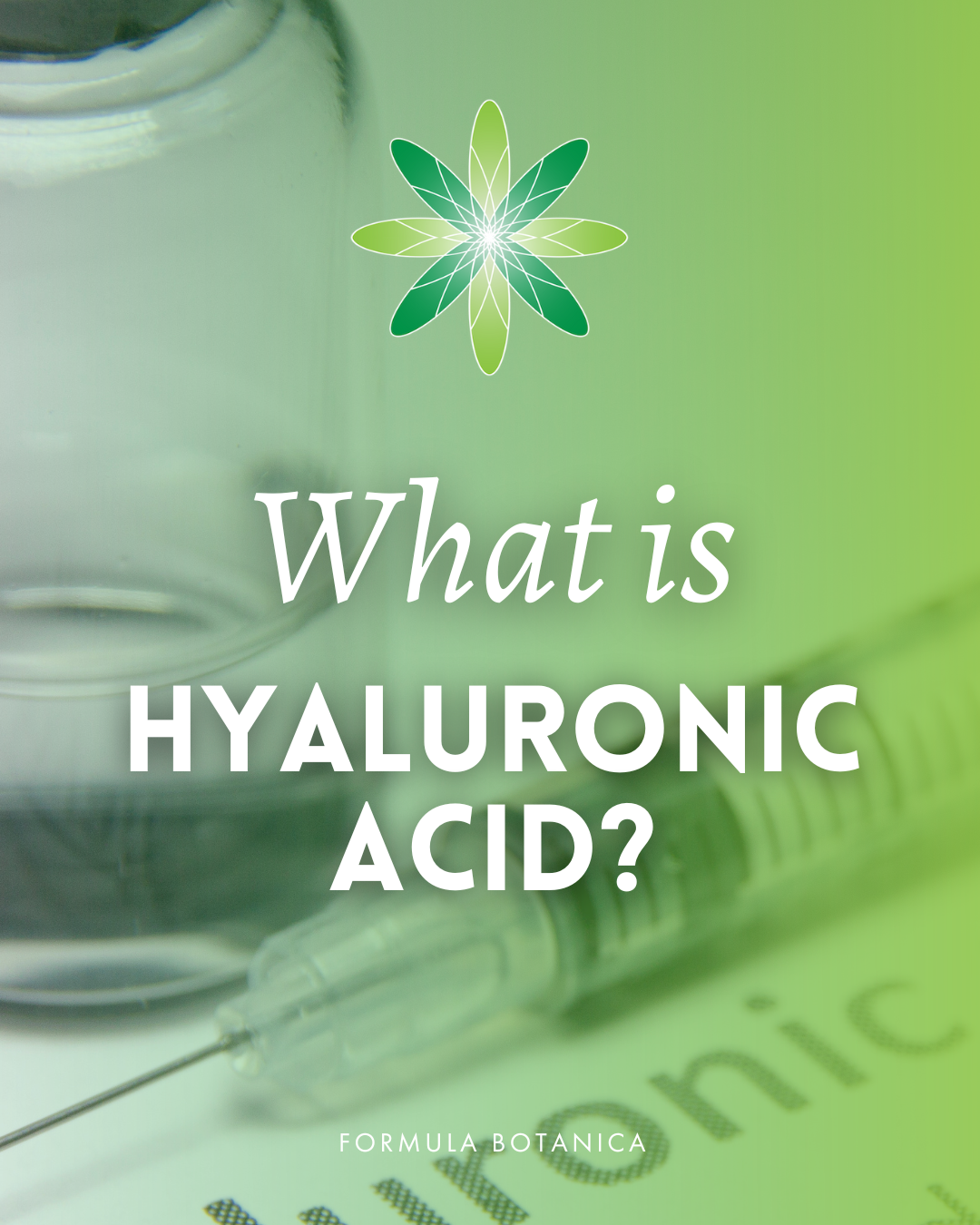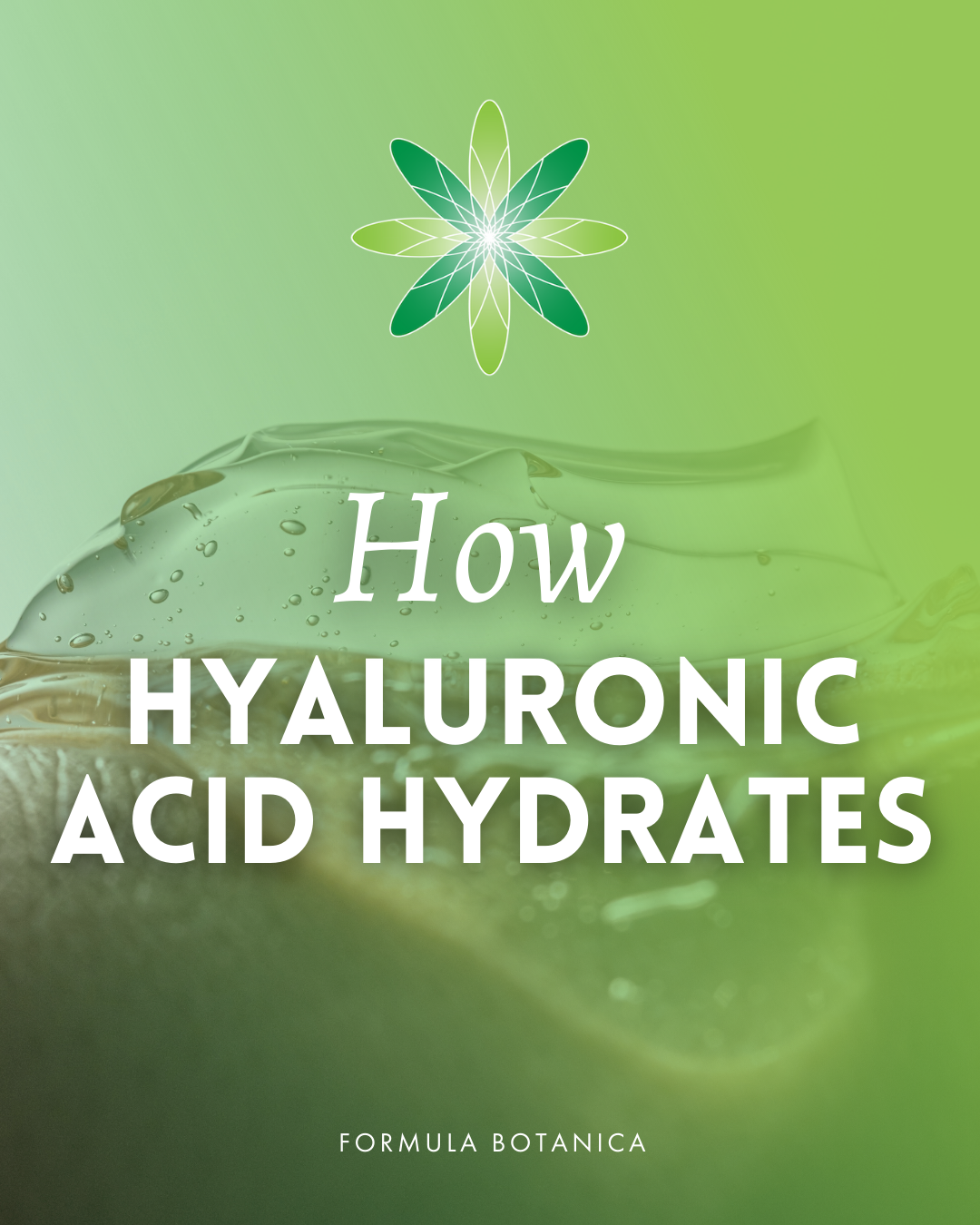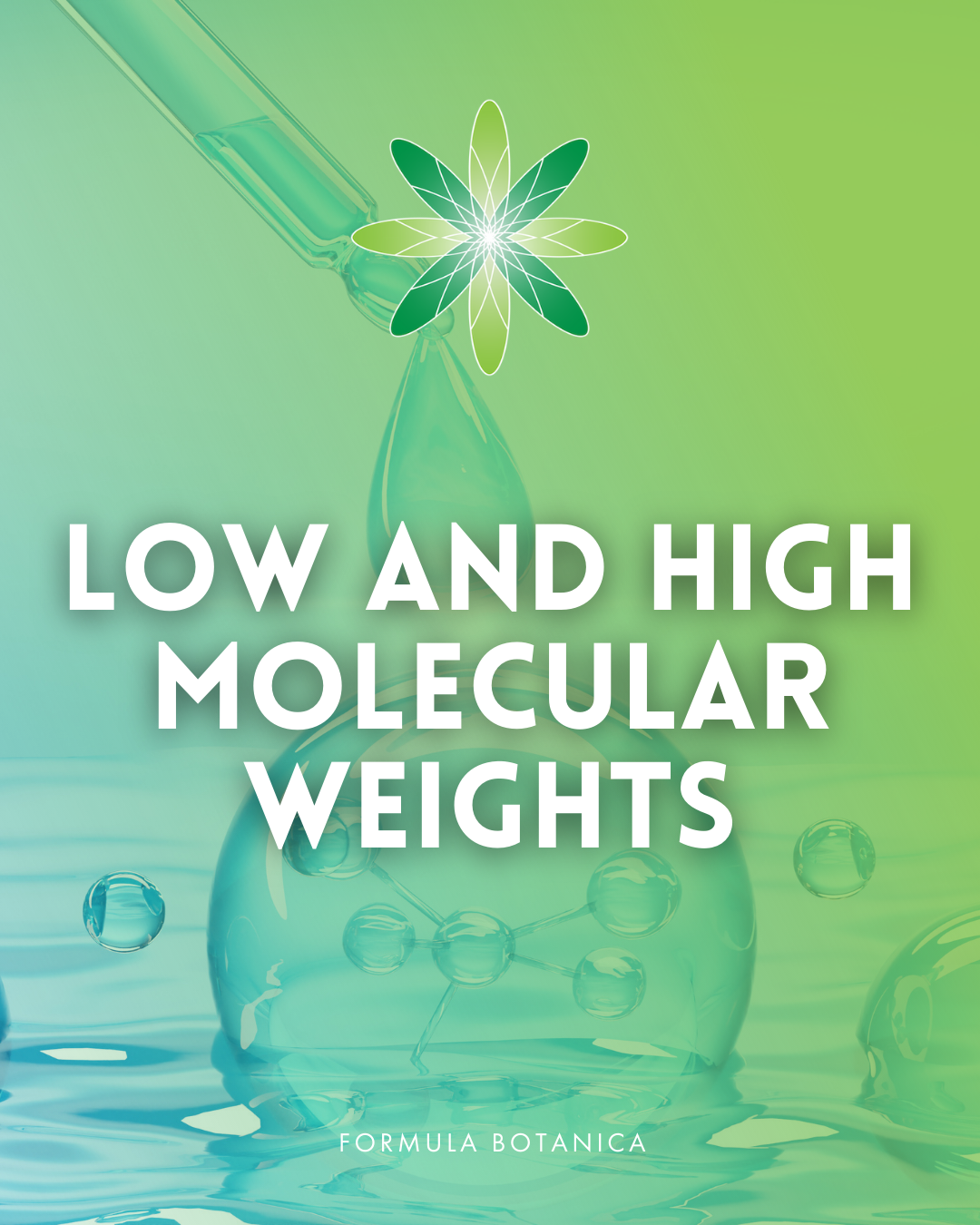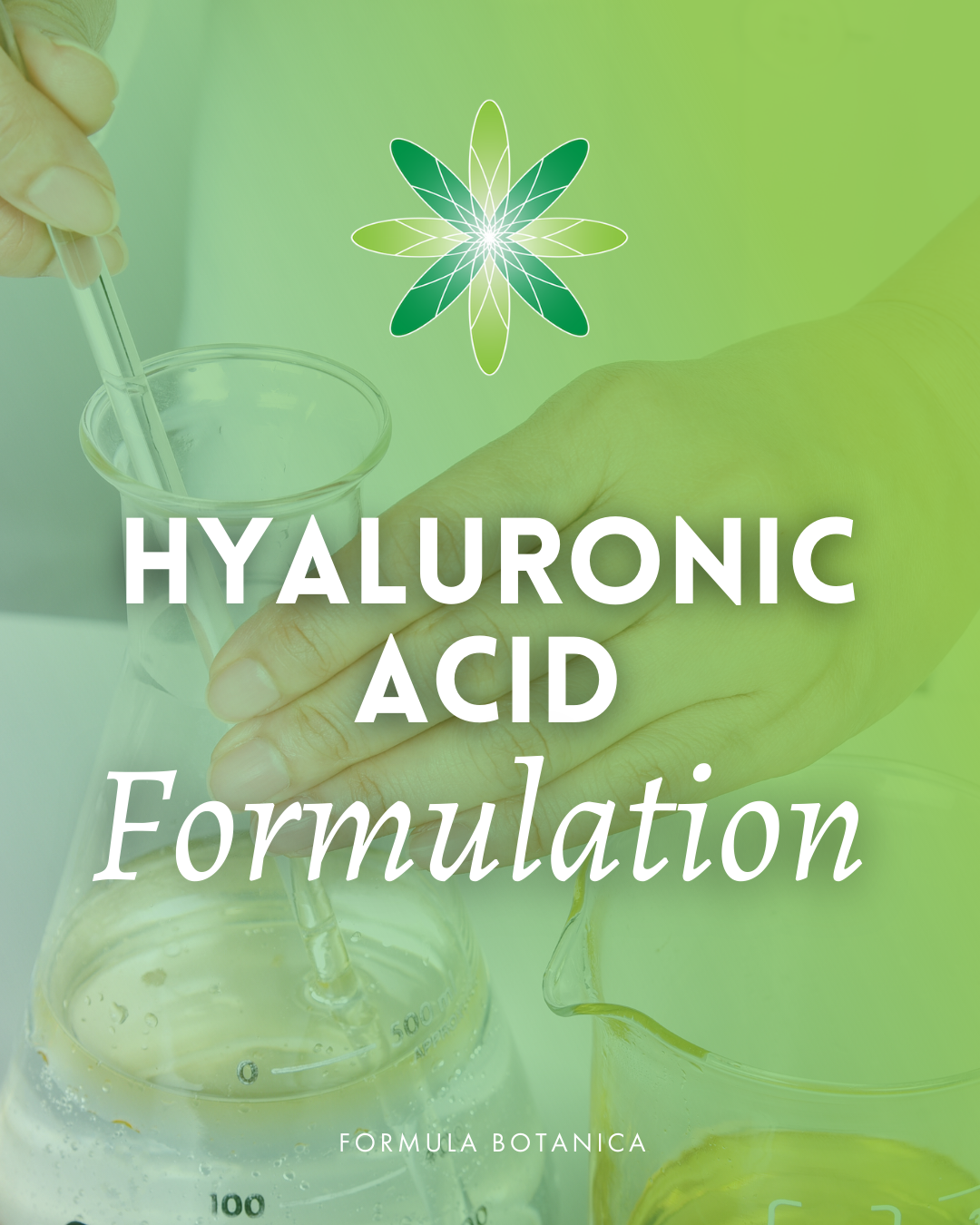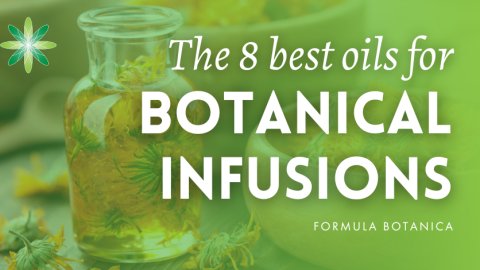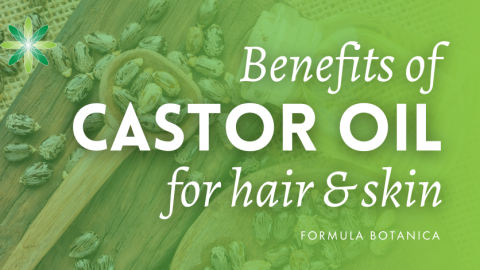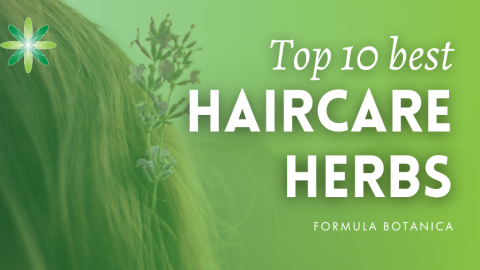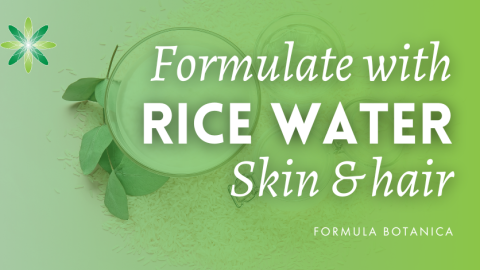Hyaluronic acid is one of the most in-demand cosmetic ingredients today. A long-time favourite in skincare, hyaluronic acid is now marketed for its high-performance, hydrating properties in bodycare – and now even in haircare. It is a darling of the cosmetics industry and beauty consumers alike.
You may be surprised to learn that it was discovered in the early 1930s and has been a cosmetic ingredient since the 1960s. But it is sported on so many cosmetic labels, you would think it’s a new-found ingredient. In one way it is “new” as it is produced very differently today – as you’ll soon discover.
This superhero of hydration certainly deserves our attention.
Why it is so feted and what cosmetic benefits does it bring? Importantly, does it live up to the hype?
Here, we unravel the secrets of hyaluronic acid – a powerhouse of hydration – looking beyond its reputation to explore why it is a game-changer for indie cosmetic formulators.
Spoiler alert: hyaluronic acid’s high-performance possibilities are well within reach of the new cosmetic formulator!
What is hyaluronic acid?
Hyaluronic acid is a polysaccharide found naturally in the skin in its extra-cellular matrix, and is also part of the skin’s natural moisturising factor (NMF) along with other compounds such as urea, lactic acid, fatty acids (ceramides). It therefore contributes to maintaining the skin barrier.
The skin holds around 50 percent of our body’s hyaluronic acid content, so you can sense already why it may have a key role to play in our skin’s functioning.
Hyaluronic acid in cosmetics – its origins
In the 1960s, animal-sourced forms of hyaluronic acid were used in cosmetics. The most common source for both cosmetic and medical uses in that era was derived from rooster combs. Use of animal-derived hyaluronic acid has decreased over time due to ethical concerns, potential allergenic reactions, and the development of more sustainable and cruelty-free production methods.
Today, hyaluronic acid is produced through bio-fermentation processes using bacteria in order to provide ethical and consistent sources for the cosmetics industry. However, do check with your supplier about its origins.
How does hyaluronic acid hydrate our skin?
Hyaluronic acid’s magic lies in its ability to hold up to 1000 times its weight in water, making it the ultimate hydrating hero. It is an excellent humectant and unlike other hygroscopic cosmetic ingredients, its ability to attract and hold water is less dependent on the environment around us; that means it performs excellently irrespective of the level of humidity.
A cosmetic humectant is a functional, hygroscopic ingredient that hydrates the skin thanks to its ability to attract and bind to water. The water source can vary: humectants can attract water from the humidity in the environment around them, or even from the skin itself by pulling water from deeper layers to more superficial layers.
Other humectants common in natural cosmetics are glycerine, sorbitol (a sugar alcohol), honey, propanediol (natural version), sodium lactate, and hyaluronic acid. See our guide:
But there’s a downside. As we age, our skin’s natural production of hyaluronic acid reduces and degradation of the hyaluronic acid also increases, resulting in skin dryness and dehydration. Including hyaluronic acid in formulations can help revitalise the skin’s moisture levels, leading to a more luminous, plump complexion.
First, we need to explore the forms of hyaluronic acid – including, strangely you might think, its molecular weight – in order to understand how it works its magic in our formulations.
Molecular magic: low- vs high-weight
For formulators, the distinction between low and high molecular weight hyaluronic acid is crucial to the art of formulating a super-hydrating cosmetic. On cosmetic ingredient supplier sites, you may have seen low molecular weight (LMW-HA) and high molecular weight hyaluronic acid (HMW-HA) mentioned and wondered what they were.
In brief, low molecular weight hyaluronic acid penetrates deeper into the skin – staying at the epidermic level – offering more lasting hydration, while high molecular weight creates a topical, protective barrier on the skin’s surface offering temporary hydration and visible plumping of the skin.
This dynamic duo of molecular weights deliver both immediate and longer-term hydration, and you can use both in the same formulation. There is some debate about the effectiveness of using either weight of hyaluronic acid in rinse-off haircare preparations, but some cosmetic firms are providing evidence of its hydrating powers even in this use.
We examine the molecular difference in depth on our dedicated “Mini-Lab” on hyaluronic acid over in our membership site, The Lab at Formula Botanica. Register to be first to know when The Lab opens its doors, so you can enjoy the hyaluronic training module along with over 35 other in-depth topics.
How to formulate with hyaluronic acid
Now you know about the importance of its molecular weight, let’s look at the forms of hyaluronic acid available to the cosmetic formulator.
INCI: Sodium hyaluronate
Hyaluronic powder: You can find hyaluronic acid as a white powder or as a gel. We typically use hyaluronic acid between 0.01 and 1 percent. You will need to hydrate the powder in water for a while (overnight is ideal to ensure it is fully dissolved).
Just as we dissolve gums in glycerine, we can also opt to use glycerine as a wetting agent to help make the hydration of hyaluronic powder easier; or use emollients and humectants like propanediol for the job. There is no reason you can’t combine humectants. Ensure you know the weight of the diluent (water or glycerine) so you can work out the maths to add the desired amount of hyaluronic acid to your formulation.
Hyaluronic acid gel: If using the gel form, make sure it is safely preserved as you may need to add another preservative. Check your supplier’s information. Find out more about natural preservation in our Certificate in Natural Cosmetic Preservation, or in the blog posts below:
Working with hyaluronic acid in cosmetics
Hyaluronic acid is a great ingredient to formulate with, as you can add it to light emulsions such as creams and serums. Combine it with other humectants or active ingredients for a synergistic effect.
There are a few crucial things to note about working with hyaluronic acid in cosmetics:
- Storage: The powdered form needs to be kept dry, so store it carefully in an air-tight container away from humidity.
- Weighing: If you make small batches of your formulation, you will need precision scales as you are adding very minute amounts of hyaluronic acid. It helps to use it in diluted and dissolved first to resolve this issue.
- Processing: Hyaluronic acid should not be processed on high shear, which means with a high-shear homogeniser. Ideally, use a hand whisk or overhead stirrer.
- Cool-down phase: Add hyaluronic acid powder or gel to the cool-down phase of your formulations.
- Gel formulations: Bear in mind that low molecular weight hyaluronic acid won’t form a gel.
- pH range: Hyaluronic acid is best used in the lower pH ranges of around 5- 5.5.
Check out these formulations for inspiration on how to include hyaluronic acid:
How to make a rose hydrating facial serum
How to formulate a bakuchiol beauty concentrate
Formulate a hydrating body mist with tropical extracts
How to make a scented natural body yoghurt
Best Natural Alternatives to Hyaluronic Acid
As most forms of hyaluronic acid for use in cosmetics are produced through bio-fermentation, you may wish to seek natural, plant-derived alternatives that offer the similar hydration-boosting properties to hyaluronic acid. Here are just some natural alternatives to explore:
1. Aloe Vera
INCI: Aloe Barbadensis Leaf Juice Powder
One of the most popular ingredients in skincare, aloe vera is a soothing and hydrating ingredient, with a water content ranging from 99 to 99.5%. Since aloe vera powder is 200 times more concentrated than the gel, it provides a thirst-quenching effect. Use 0.1-1% aloe vera powder in your toners or moisturisers, or in gel-like products by adding a gelling agent. Find out more about aloe vera:
The formulator’s guide to aloe vera
How to make an aloe vera repairing mist
How to formulate a soothing after-sun gel
How to make a jasmine and aloe micellar water
2. Snow Mushroom
INCI: Tremella fuciformis polysaccharide
Often labelled as the “plant-based alternative” to hyaluronic acid, snow mushroom has unique water-retaining properties. (Note: funghi are not plants, however, but their own unique organism category.) Thanks to their polysaccharides, snow mushrooms keeps the skin hydrated and supple, and also reduces signs of skin ageing signs.
Use snow mushroom in creams and serums by diluting the powder in water before adding it to your cool-down phase. Find out more about this active ingredient in the Mini-Lab on Mushroom Ingredients.
3. Panthenol
INCI: Panthenol
Natural panthenol is another humectant that keeps the skin moisturised. Also called pro-vitamin B5, it promotes skin regeneration and strengthens the skin barrier. It penetrates the skin and is converted to D-pantothenic acid. It is available as a water-soluble powder (L-Panthenol) or a water-soluble liquid (D-Panthenol) to add in the cool-down phase.
Other alternatives
There are many more hyaluronic acid alternatives you could formulate with, such as birch sap, vegetable collagen, and oat silk, which provide the skin with as much hydration as hyaluronic acid. As a natural formulator, it is vital to keep up to date with ingredient trends and learn to formulate with new ingredients.
Further reading and references
Nobile et al, 2014. Anti-aging and filling efficacy of six types of hyaluronic acid based dermo-cosmetic treatment.
Bravo et al, 2022. Benefits of topical hyaluronic acid for skin quality and signs of skin aging.
Juncan et al, 2021. Advantages of hyaluronic acid and its combination with other bioactive ingredients in cosmeceuticals.
Essendoubi et al, 2016. Human skin penetration of hyaluronic acid of different molecular weights as probed by Raman spectroscopy.
Saleem et al, 2022. Aloe vera gel effect on skin and pharmacological properties.
Boo YC, 2021. Mechanistic Basis and Clinical Evidence for the Applications of Nicotinamide (Niacinamide) to Control Skin Aging and Pigmentation.
Ma et al, 2021. A review on the production, structure, bioactivities and application of Tremella polysaccharides.
Camargo Jr. et al, 2011. Skin moisturizing effects of panthenol-based formulations.
Leave us a comment

Ariane is Formula Botanica’s Content Creator and an active member of the student community. She has worked as a professional journalist, blogger, copywriter and editor before joining Formula Botanica full-time in 2024.


